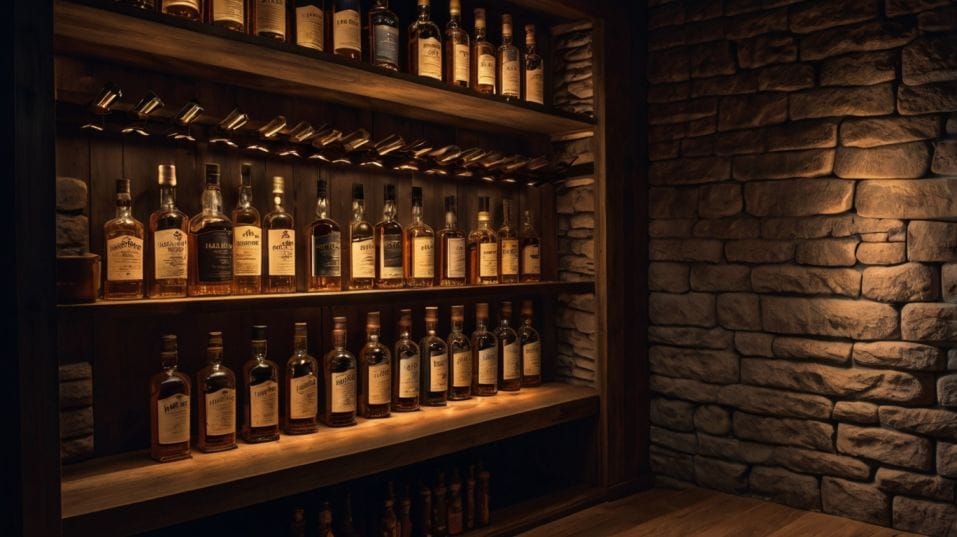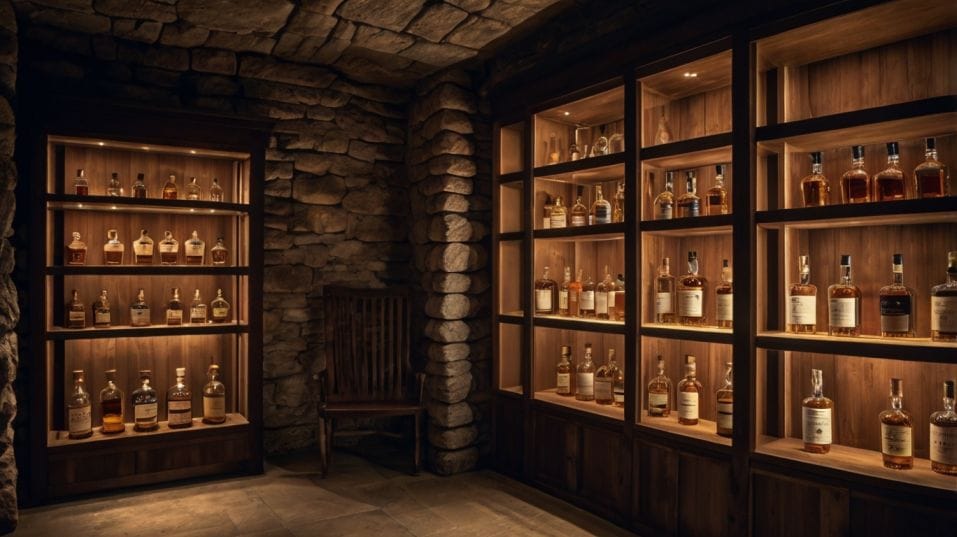The Best Whiskey Storage Tips for Hot Climates
Discover how to store whiskey in hot climates like a pro. Learn practical tips to protect flavor, preserve value, and build a lasting collection.

Ever wonder if your whiskey’s suffering in the heat—and you just don’t know it yet? Hot climates don’t just test your tolerance. They test your bottles.
If you’re new to whiskey, understanding heat’s quiet damage can save you from flat, faded pours down the line. Good news: you don’t need a cellar.
You just need smart habits that protect what’s inside every pour. Here’s how to keep your collection cool, stable, and worth every sip.
Why Heat Is a Problem (Even for Sealed Bottles)
Let’s clear something up early: whiskey doesn’t “go bad” like food. But it degrades, and that degradation gets a boost from heat.
Here’s what’s really going on inside your bottle:
- Expansion and contraction: When whiskey heats up, it expands. When it cools, it contracts. That movement stresses the seal. Over time, this can cause microscopic leaks or allow oxygen to creep in.
- Cork damage: Natural corks dry out in hot, arid conditions. Once that happens, the seal weakens and oxygen finds its way in. That’s when things start turning flat, woody, or even sour.
- Accelerated oxidation: Warm temps and extra air inside the bottle = faster chemical changes. What should be a slow, graceful evolution turns into flavor collapse.
You won’t always spot it right away. Whiskey doesn't advertise its decline. It just… fades. Less fruit. Less spice. Less of what made you care in the first place.

Choose the Right Storage Spot
Forget fancy displays for now. Your top priority is temperature stability. The bottle doesn’t care how cool your setup looks if it’s roasting in the process.
Start with these non-negotiables:
- Avoid direct sunlight: UV rays are brutal. They break down chemical compounds in the whiskey and can permanently alter both color and taste. Store your bottles in a shaded space—even if the room itself is cooler, sunlight can still be damaging.
- Stay away from windows, appliances, or garages: South-facing windows, heat-generating appliances (like stoves or refrigerators), or poorly insulated garages can all create dramatic temperature spikes. Even a few degrees up or down every day can slowly compromise the liquid.
- Interior closets and pantries: The best places are those that stay consistently dark and relatively cool, even in the summer. Interior walls (not exterior-facing) help buffer against the outdoor heat.
You don’t need to obsess over hitting an exact number like 65°F. But you do want a space that doesn’t swing wildly between morning and evening.
Standing vs. Lying Down
Whiskey should always be stored upright. Unlike wine, you don’t want long-term cork contact.
Here’s why that matters more in hot climates:
- Heat already dries out corks. If the liquid is pressed against it, the alcohol can break down the cork even faster.
- A compromised cork in the heat is a perfect recipe for oxidation and evaporation.
If you’re worried about dry corks, it’s fine to give them a quick inspection every few months. A small swipe of food-grade mineral oil on the top (not the underside touching whiskey) can help maintain elasticity in drier environments.
Half-Full Bottles = Faster Decline
Once a bottle is opened, oxygen starts changing everything. In mild climates, this process is slower. But in hotter regions, the air inside the bottle gets warmer, too—which means faster reactions, faster flavor loss.
Here’s how to deal with it:
- If you’ve got less than half a bottle left and don’t plan to finish it soon, transfer the contents to a smaller glass container. A tight seal and less headspace will slow oxidation significantly.
- Don’t store opened bottles for years expecting them to taste fresh. Enjoy them within a reasonable window—ideally within 6–12 months after opening, depending on how full the bottle is and how it’s stored.
- Be careful with decanters. Most decorative decanters aren’t airtight. If you must use one, make sure it has a proper seal—and don’t use it for long-term storage.
Invest in Smarter Storage (If You're Serious)
You don’t need gear to store whiskey well—but if you’re building a collection, it’s worth considering.
- Wine fridges aren’t just for wine. Many models allow you to set the temperature in the mid-60s. That’s ideal for whiskey too. Look for units with UV-resistant glass doors and strong humidity seals.
- Thermal blackout curtains can drastically reduce sun exposure and radiant heat in your storage room if you can’t avoid windows.
- Humidity control isn’t crucial for the liquid, but it matters for corks and labels. If you’re in a dry climate, keep the room around 50-60% humidity to prevent shrinkage and label damage.
Again, none of this is about luxury—it’s about protecting what you’ve paid for.
Label Preservation Matters Too
Collectors know: labels tell stories. In hot climates, moisture can warp them, and dry air can crack them.
Tips for keeping bottles in top condition:
- Keep labels dry. Never refrigerate or freeze bottles and then return them to room temperature—that invites condensation.
- Avoid stacking bottles directly against each other. Heat + pressure = damaged paper and foil.
- If a bottle’s sentimental or collectible, store it in its original box or a protective sleeve.
Looks may not affect flavor—but they do affect value.
When to Worry (and When to Relax)
Let’s be real. A bottle exposed to 90°F for a day isn’t ruined. But repeated exposure to high temps, wild swings, or cork failure? That adds up.
Here’s when it’s time to take action:
- You see visible evaporation through the neck.
- You notice a cork that’s cracked, loose, or crumbling.
- The whiskey’s color looks duller than it should.
- It tastes overly woody, papery, or lacks intensity—especially for a bottle you know well.
Most of the time, these issues are avoidable. But only if you’re paying attention.
Final Thoughts
Hot climates aren’t a reason to panic. They’re a reason to level up how you care for your whiskey. Protecting flavor is part of the craft. Find a stable space. Control what you can. Don’t let heat rob you of what makes whiskey special.
This isn’t about being precious. It’s about being intentional. Because if you’re going to collect, taste, or share great whiskey, you owe it to yourself to store it like it matters.
So here’s your next move: pick a bottle you care about. Check its seal. Check its spot. Think about the conditions you’ve put it in. Then upgrade your setup.
Even small tweaks pay off. Start building a collection that holds up—no matter how high the temperature climbs.




